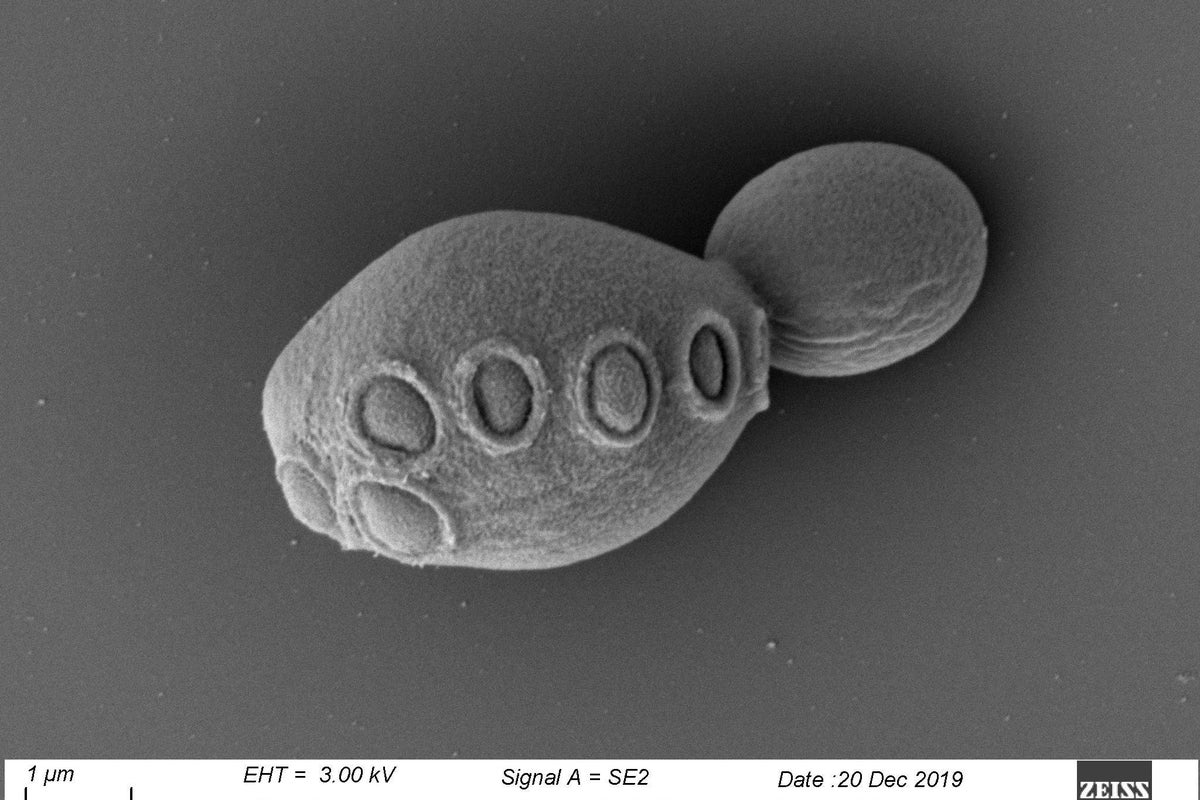
Scientists are a step closer to creating complex “artificial” life after replacing more than 50% of genetic material in a yeast cell with synthetic DNA.
An international team involving UK researchers have combined more than seven synthetic chromosomes – tiny packages of DNA – into a single cell, which was found to survive and replicate like normal yeast cells.
These chromosomes have been painstakingly built from scratch over the last decade using chemicals in the lab as part of the Synthetic Yeast Genome Project, also known as Sc2.0.
Yeast is a single-celled microbe classed as an “eukaryotic” organism as it stores DNA within a nucleus.
It is the first time scientists have attempted to build the whole genome, or genetic blueprint, of an eukaryote.
Although the world’s first living cell controlled entirely by synthetic DNA was made in 2010, it was in a bacterial cell without a nucleus.
It is thought that once complete, new strains of synthetic yeast could help make products such as vaccines and biofuels.
Professor Jef Boeke, a synthetic biologist at New York University’s Langone Health and leader of Sc2.0, said: “We decided that it was important to produce something that was very heavily modified from nature’s design.
“Our overarching aim was to build a yeast that can teach us new biology.”
The team has now re-written the operating system of the budding yeast, which opens up a new era of engineering biology— Prof Patrick Yizhi Cai
Professor Patrick Yizhi Cai, chair in synthetic genomics at the University of Manchester, said: “The team has now re-written the operating system of the budding yeast, which opens up a new era of engineering biology – moving from tinkering a handful of genes to de novo design and construction of entire genomes.”
Prof Cai has also led the team that created a chromosome that is new to nature known as the tRNA Neochromosome.
The baker’s yeast (Saccharomyces cerevisiae) genome is made up of 16 chromosomes and shares roughly a third of its 6,000 genes – stretches of DNA that encode for proteins – with humans.
Experts from the University of Nottingham and Imperial College London have also led the construction of the final synthetic yeast chromosome, known as XI, which means all the 16 native chromosomes in common baker’s yeast have now been synthesised.
The findings have been published as part of a collection of papers across Cell, Molecular Cell and Cell Genomics.
Dr Ben Blount, an assistant professor in the School of Life Sciences at the University of Nottingham, said: “The synthetic chromosomes are massive technical achievements in their own right, but will also open up a huge range of new abilities for how we study and apply biology.
“This could range from creating new microbial strains for greener bioproduction, through to helping us understand and combat disease.”
I like to call this the end of the beginning, not the beginning of the end, because that's when we're really going to be able to start shuffling that deck and producing yeast that can do things that we've never seen before— Prof Jef Boeke
To combine the synthetic chromosomes into a single yeast cell, the researchers first created several yeast strains – each containing one synthetic chromosome.
The team then interbred these partially synthetic yeast strains and identified the descendants that carrying both synthetic chromosomes.
The process was repeated across several generations of yeast strains until six full chromosomes and one chromosome arm were consolidated into a single cell.
The researchers then used a different method, known as chromosome substitution, to transfer a synthetic chromosome, known as IV, to create a yeast cell that is more than 50% synthetic.
The process created “bugs” which the researchers said they were able to fix using a gene editing methods.
Prof Boeke, said: “We’ve now shown that we can consolidate essentially half of the genome with good fitness, which suggests that this is not going to be a big problem.”
The final step will be to bring all the individual synthetic chromosomes together into a fully synthetic yeast genome to build the the world’s first eukaryote controlled by synthetic DNA.
Prof Boeke said: “Now we’re just this far from the finish line of having all 16 chromosomes in a single cell.
“I like to call this the end of the beginning, not the beginning of the end, because that’s when we’re really going to be able to start shuffling that deck and producing yeast that can do things that we’ve never seen before.”







